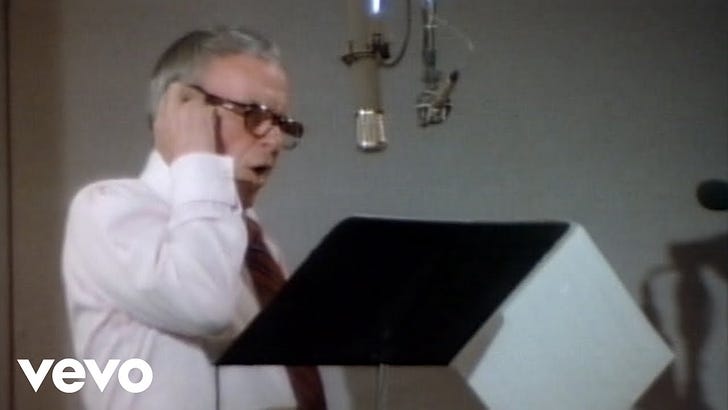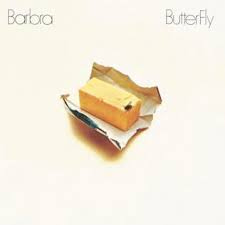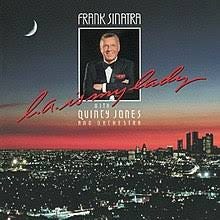The Brio of Frank Sinatra in the Late Innings
Reconsidering "It's Alright With Me" from Sinatra's 57th -- and final -- solo studio album in 1984.
Covering music at daily newspapers in the 1980s meant paying attention to current hitmakers, of course, but also the many legends of music who were past their prime creative years but still doggedly working. I remember routine battles with editors over tepid, mostly forgotten Barbra Streisand releases (probably lost more than half of them), and snarky pieces about pop refurbishment attempts by once-vital rock bands like REO Speedwagon that were de-snarked by those same editors.
There was no question about covering the arrival of a new Frank Sinatra record, however. And from the press release, the mostly-recorded-in-New York project L.A. Is My Lady — which is getting a 40th Anniversary expansion this October — seemed promising. Quincy Jones producing, with such soloists as vibraphonist Lionel Hampton, saxophonist Michael Brecker and guitarist George Benson. A big band stuffed with ace session players, executing arrangements of standards by Count Basie veterans Frank Foster (on “After You’ve Gone”) and Sammy Nestico (“It’s Alright With Me,” which updated Sinatra’s 1959 version from the film Can Can).
Sinatra’s YouTube channel recently blasted out an invitation to reconsider L.A. Is My Lady, via a spotless 2024 remix of “It’s Alright With Me.” The audio is paired with visuals from the live-in-the-studio session featured in the 1984 companion film Portrait of an Album.
It’s a barnburner, a wily chase-scene romp. It’s two minutes and forty-three seconds of thrill ride in which exuberant big-band shout choruses are juxtaposed against Sinatra’s instinctively loose phrasing and leftover Rat-Pack insouciance. (I mean, really, would any other singer celebrate a woman’s “chops” instead of “lips” in 1984?). It is worth experiencing purely for the exacting precision the musicians bring to the breakneck tempo. And for the way that pulse remains interesting when the time is hammered aggressively, and in those moments when it skates and sways effortlessly. And for Benson’s poised solo turns. And on and on.
Here’s Quincy Jones three years after his megahit album The Dude, two years after the gargantuan success of Michael Jackson’s Thriller and a year before he’d coordinate and produce the all-star “We Are the World” single. Jazz is enmeshed in a “tradition must be respected” moment, and there’s a bit of that going on the album. Back then Sinatra was human, not a deity, and this high-gloss no-expense-spared project — a reunion of sorts with Jones, who wrote the arrangements for It Might As Well Be Swing, the 1964 date pairing Sinatra with Count Basie and his orchestra — caught critics and others a bit off-guard.
Until, that is, they got to this rendition of Cole Porter’s “It’s Alright With Me.” The miracles here are mostly intangible: The blazingly alive boisterous spirit, which Sinatra, creature of showbiz, revels in. Nobody tiptoes through this one; the brass smacks everything with gusto, Vegas style.
There’s joy unfolding from measure to measure, and that alone elevates the track far above a jazz-repertory exercise: Everyone involved knows how a barnburner scored for big band feels and what they need to do to enhance that so listeners feel it too, while also connecting it to the world of 1984 and not 1964 or 1954. There are plenty of big bands (OK I’ll say it: maybe a few too many?) in the world today, doing interesting high concept things. But how many of them have the collective energy and experience — and, more importantly, the instinctual sass — to nail something like this?
The camera finds Quincy Jones as the take finishes, and he’s beaming. “I mean, that’s right in the pocket,” he says to the room at large. And to the ages.





Tom, I grew up singing to Frank Sinatra albums. In his key! My favorite when I was a girl was Frank Sinatra the Capitol Years. I was always a fan, even throughout his well-documented shenanigans.
That was great, thanks. Growing up - and to this day - with the exception of Tony Bennett and Ella Fitzgerald, I have trouble appreciating what snotty punk me used to dismissively call "Frank Sinatra music." Your breakdown and these very human, exciting clips shed new light that I'll try to keep in mind the next time I'm confronted with big band vocal music, or whatever a more respectful name might be. (Of course insulting an entire genre of music with one artist's name does count for a backhanded compliment, right?)